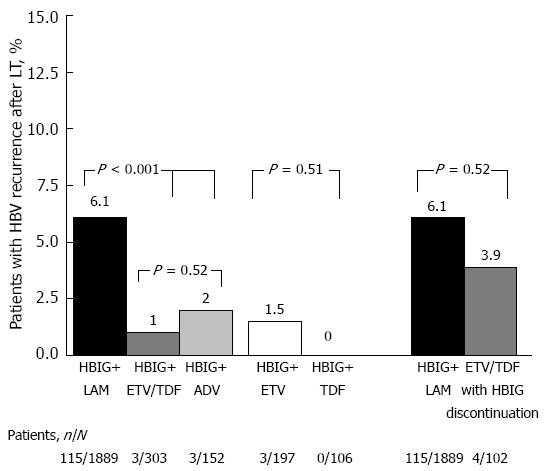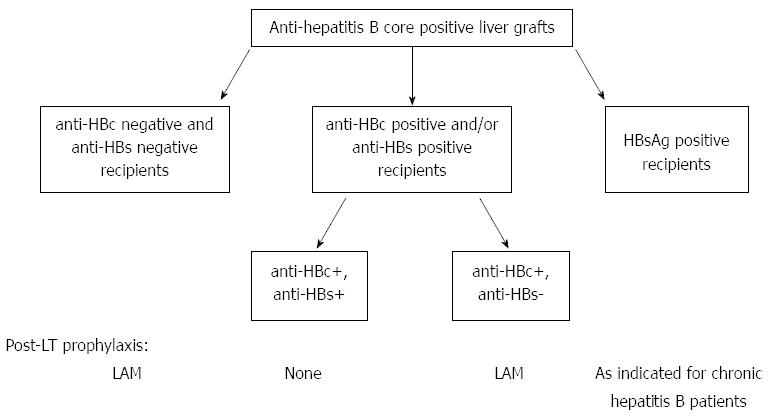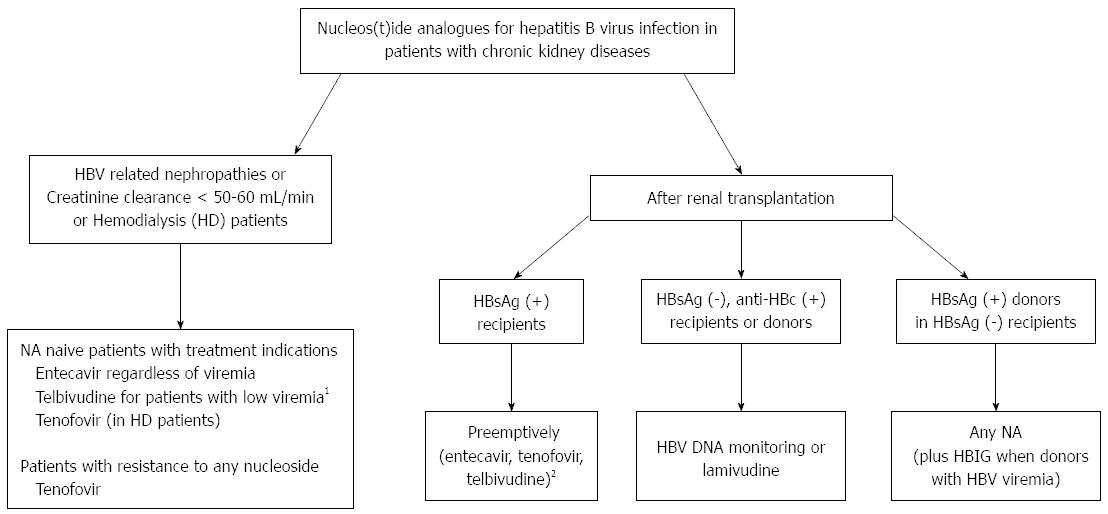Copyright
©The Author(s) 2015.
World J Gastroenterol. Feb 14, 2015; 21(6): 1738-1748
Published online Feb 14, 2015. doi: 10.3748/wjg.v21.i6.1738
Published online Feb 14, 2015. doi: 10.3748/wjg.v21.i6.1738
Figure 2 Proposed algorithm for allocation and management of anti-HBc positive liver grafts.
Such grafts should be first offered to HBsAg positive, then to anti-HBc and/or anti-HBs positive, and ultimately to HBV naive (both anti-HBc and anti-HBs negative) recipients[42]. LT: Liver transplantation; HBIG: Hepatitis B immunoglobulin; LAM: Lamivudine.
Figure 3 Proposed algorithm for the management of patients with chronic hepatitis B infection and kidney diseases.
1Low viremia is considered as HBV DNA levels < 108 or < 106 IU/mL for HBeAg-positive and HBeAg-negative patients, respectively; 2The choice based on similar criteria as before renal transplantation. NA: Nucleos(t)ide analogs; HBV: Hepatitis B virus; HBIG: Hepatitis B immunoglobulin[58].
- Citation: Cholongitas E, Tziomalos K, Pipili C. Management of patients with hepatitis B in special populations. World J Gastroenterol 2015; 21(6): 1738-1748
- URL: https://www.wjgnet.com/1007-9327/full/v21/i6/1738.htm
- DOI: https://dx.doi.org/10.3748/wjg.v21.i6.1738











